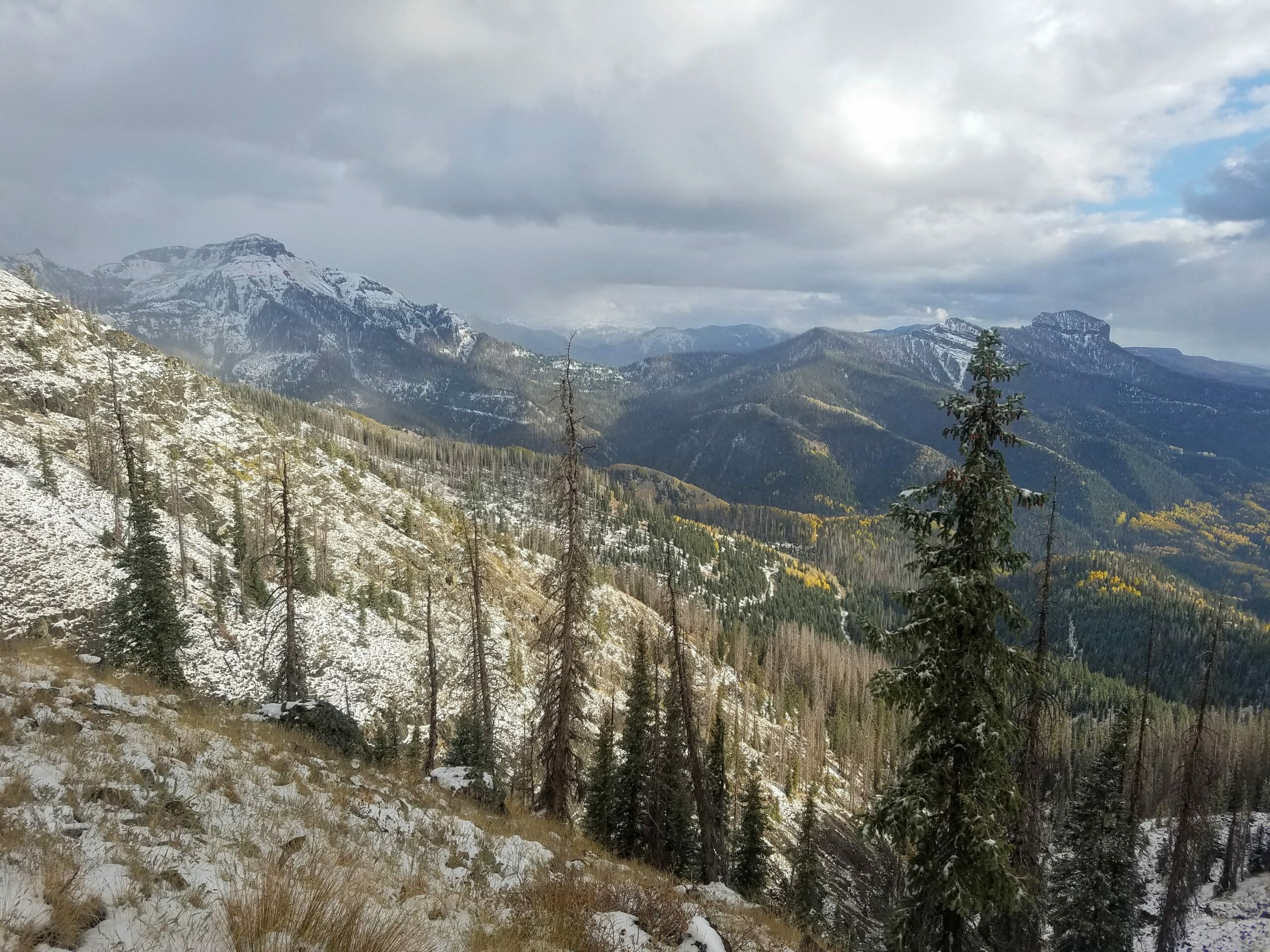By Garrett Hanks
Wolf Creek pass in the San Juan mountains of Colorado serves as the tipping point between the westward San Juan basin, home to the recently rediscovered San Juan cutthroat trout, and the Rio Grande cutthroat’s namesake river to the east.
Unlike trout, bear, mule deer and other wildlife are unhindered by the ridgeline; their tracks freely cross the divide. Look north and you’ll notice the burn scar from the West Fork fire of 2013. Setting off south along the Continental Divide Trail, you quickly pass Wolf Creek Ski Area. From here, headwaters eventually flow to Colorado municipalities like Alamosa and Pagosa Springs. Past the towns lie smaller communities, tribal nations and the downstream state of New Mexico.
You wouldn’t know the state line by looking, but the geographies, wildlife migrations, communities and waterways connect the landscape. The complexities of social, economic and ecologic factors represented on Wolf Creek are critical considerations in the decisions made by the managers of these public lands.
The Colorado-New Mexico boundary demarcates the jurisdictional divide of Forest Service regions, including the Rio Grande and Carson National Forests. Lands within these national forests, including those surrounding Wolf Creek, are managed by the Forest Service on behalf of the public. Input as to how these lands are managed fall not only to the agency tasked with their oversight, but to all the people who care about these places. Any good land manager knows the weight that comes with the task of stewardship, and at TU, as prideful public landowners, we welcome the responsibility to participate in the management of our collective public lands.
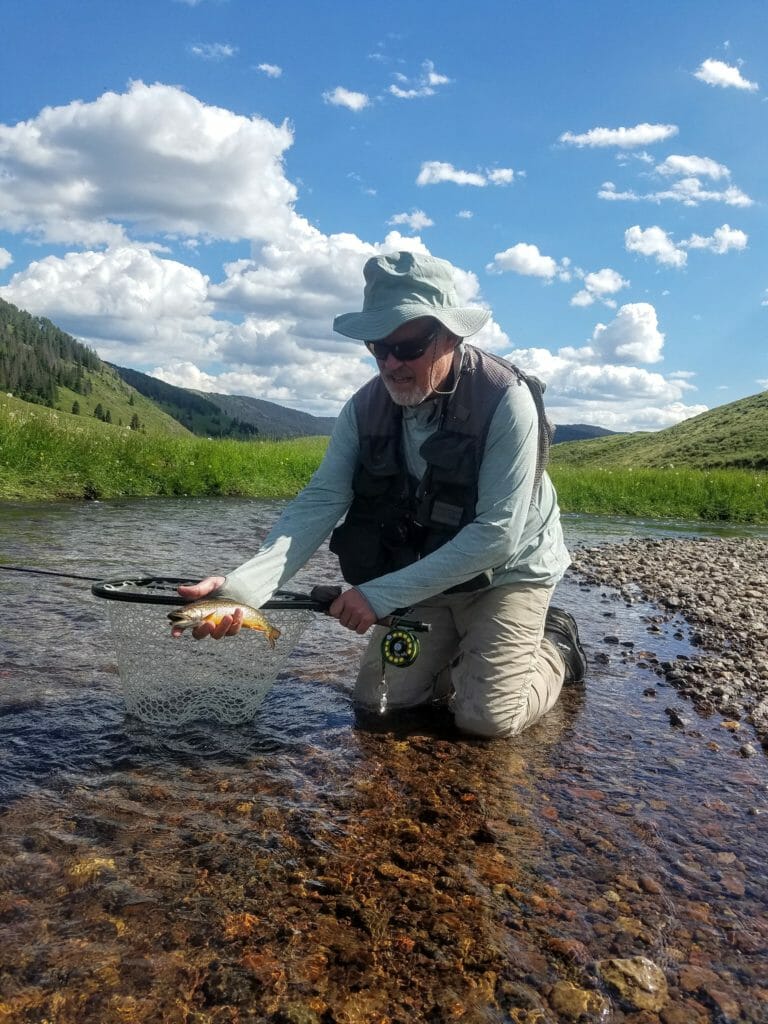
Although public land management decisions are an everyday affair, from time to time, extensive opportunities to engage are presented. Forest Plan revisions come up once every 15 to 20 years offering a pathway for conservation on a rare scale. The opportunity to provide feedback and direction to forest planners and manageres is unique; even more remarkable is the case of the Rio Grande, Carson, and Santa Fe national forests’ concurrent planning efforts that total approximately 7.5 million acres and span the majority of the upper Rio Grande basin. Through the Sportsman’s Conservation Project, the public lands branch of TU, we jumped on the unique opportunity to plan at this impressive watershed scale. Although these plan revisions are still ongoing, TU has already made significant impacts.
Work on-the-ground
Through Priority Watershed designations, TU works with the Forest Service to identify and prioritize restoration needs during the Forest planning process. These designations set the foundation for future restoration efforts and provide focused funding for implementation. An illustrative example is the long-term work of TU’s Abandoned Mine Lands program on Kerber Creek.
Here, TU piggybacked on years of agency cleanup at the Rawley 12 mine by completing over 80 acres of mine tailings reclamation in the lower watershed. These efforts were further emphasized by three phases of cleanup at the Minnie Lynch mine, helping improve environmental quality in headwater streams. The culmination of these projects revived Kerber from nearly fishless to a fine brook trout creek and has showcased the importance of a Priority Watershed designation.
In addition, creative efforts for protecting Rio Grande cutthroat trout, like habitat improvements and wet meadow landscape water storage projects on Comanche Creek on the Carson National Forest, would not be possible without the this management tool.
Aided by TU’s contributions, the Rio Grande National Forest has already designated Priority Watersheds for the upper Rio Chama, Archuleta Creek, and Middle Carnero Creek in their Final Plan. Across the divide, TU has worked with the San Juan National Forest to establish the Rio Blanco as a “priority watershed” — home to the San Juan/Chama project, which supplies downstream communities like Albuquerque with up to two thirds of its drinking water by piping flows from the Navajo and Blanco basins of the San Juan system to the Rio Grande.
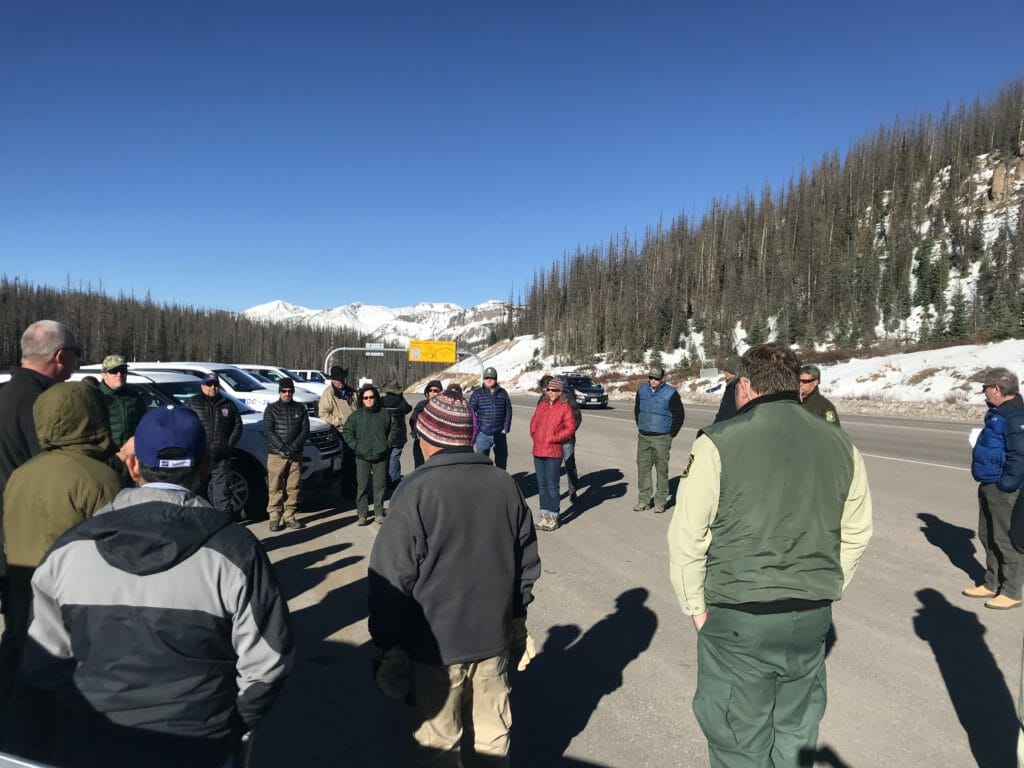
TU hasn’t stopped there when considering this opportunity to inform land management on a large scale. Because of the credentials won through muddy boots, long-forged relationships and successful partnerships, we are able to look forward via forest plan revisions to: ask for wildlife focused Management Ares across forest boundaries; advance additions to the Sangre de Cristo Wilderness; and outline monitoring protocol to ensure accountability.
We have also been staunch advocates for forest-wide Rio Grande cutthroat trout protections. Using a suite of tools complimentary to Priority Watersheds, such as Riparian Management Zones and Conservation Watershed Networks for Native Fish, TU sees success in using precedent-setting adaptive management strategies.
Continual efforts
Of course, these revised forest plans are confronting different issues than the plans they replace – outdoor recreation is now a billion-dollar economy, drones monitor elk herds and wildfires have become larger and more intense. Because climate change will impact coldwater fisheries, we must rely on TU’s science-based approach to decision making. By planning for resilient and adaptive landscapes, public land planning compliments TU’s mission to protect our coldwater fisheries and their watersheds for future generations.
It is with this long view in mind that TU takes a watershed perspective into all our management recommendations. We embrace the complexity of varying resource concerns, natural landforms, communities, politics, policy, and land ownership. Ultimately, our collective influence and unique expertise – from public lands engagement to on-the-ground restoration – are what enables TU to make lasting impacts to the landscapes we love, live in and fish.
Fishing for native trout in this area
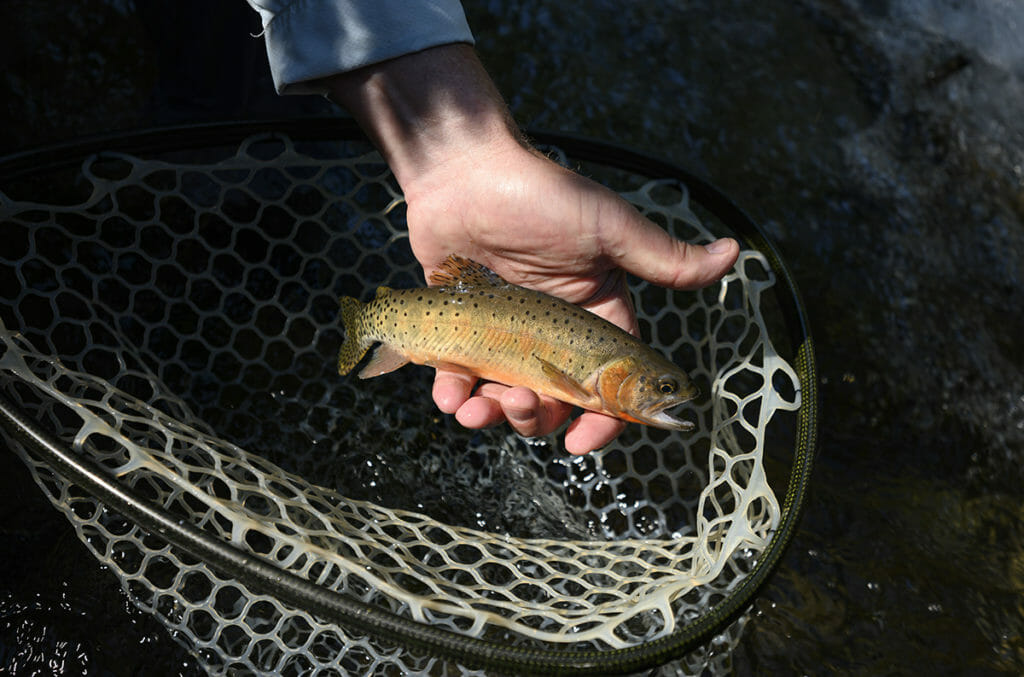
Experiencing the vast and diverse waterways of the Rio Grande and San Juan basins can be as simple as choosing a roadside creek or as adventurous as any backpacking trip you can dream up. It is a public land choose-your-own-adventure in the headwaters of these well-known western rivers.
Fishing small streams for native fish is much like blue-lining in the East. Pick up a map, choose a spot and head out. There are almost always fish to find, and cutthroat are a bonus. Think small — small water and small rods. A single small fly box with standard patterns will suffice.
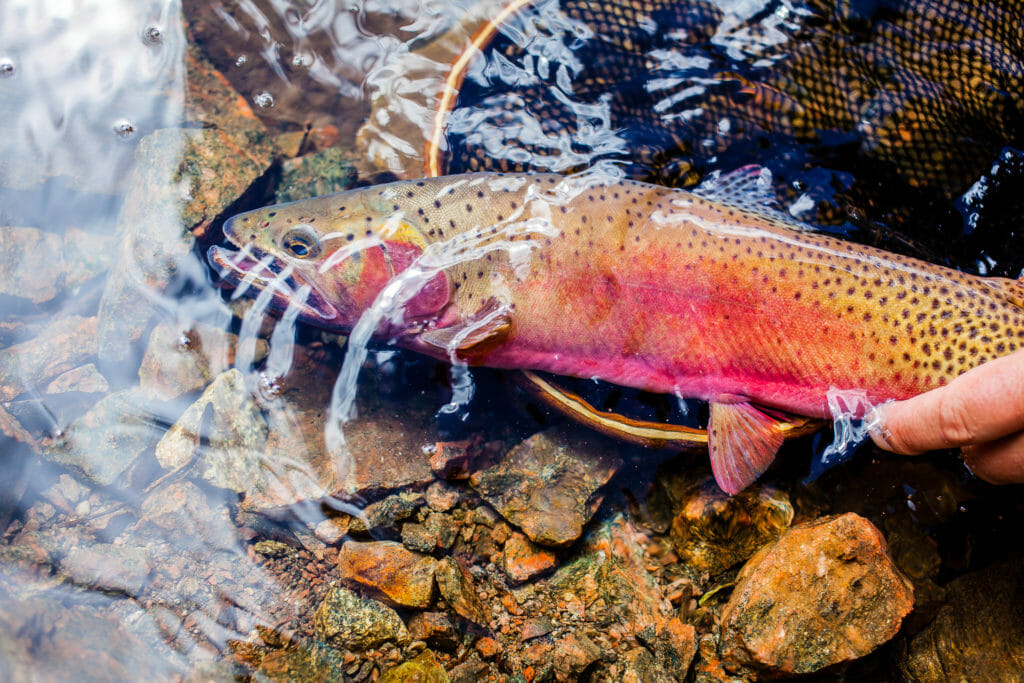
For bigger fish, bigger hikes are necessary. Some of the alpine lakes can hold surprisingly large cutthroats, though those secrets are harder to come by. You’ll want to bring a heavier rod to cast in the wind, and for extended journeys, the weight of a backup rod can save your entire trip.
All manner of Rio Grande cutthroat trout recreational fishing opportunities, fishing tips and species information can be found in a local fly shop, of course, and this brochure presented by TU and many of its partners found here.



